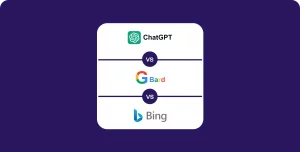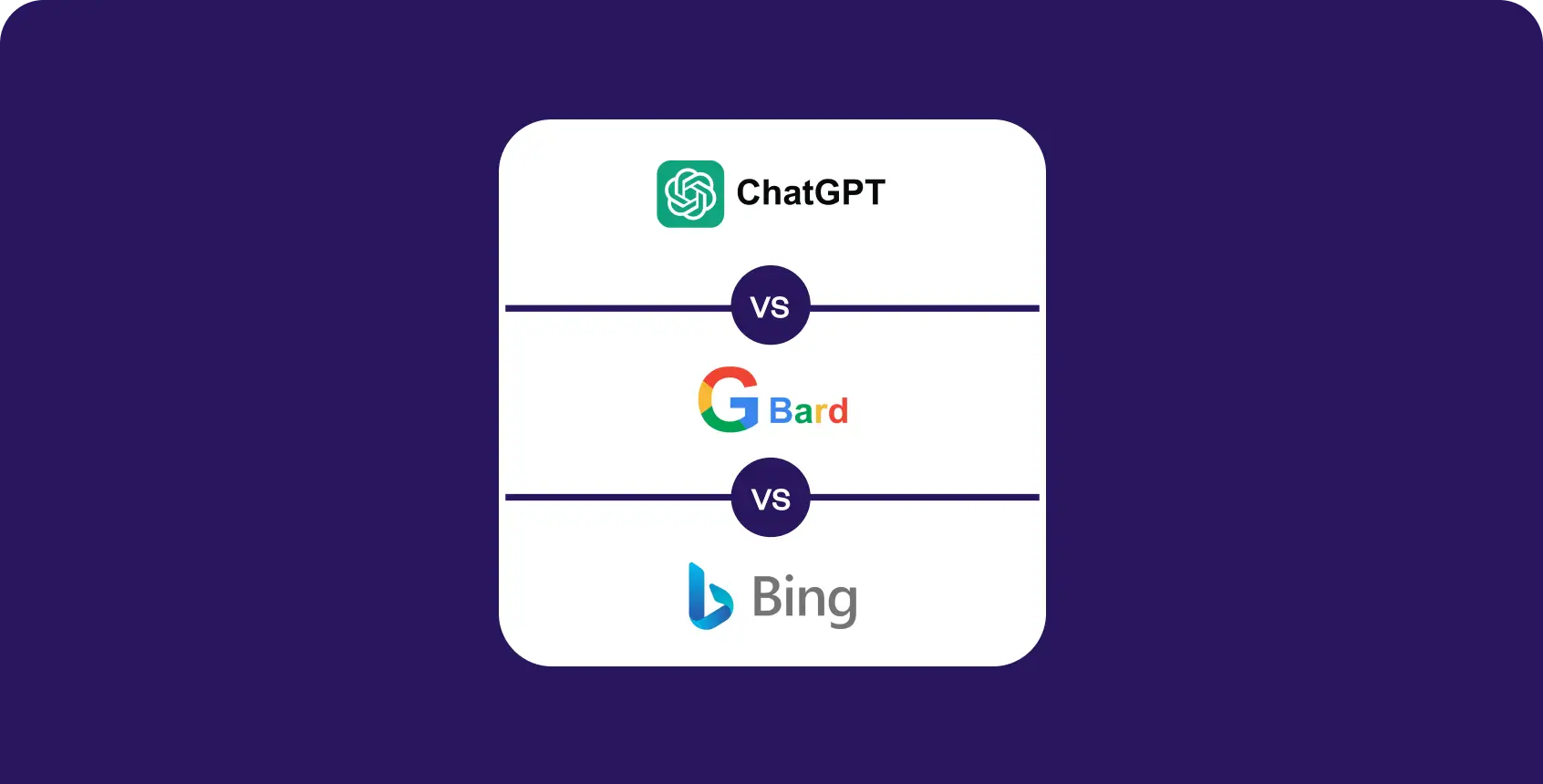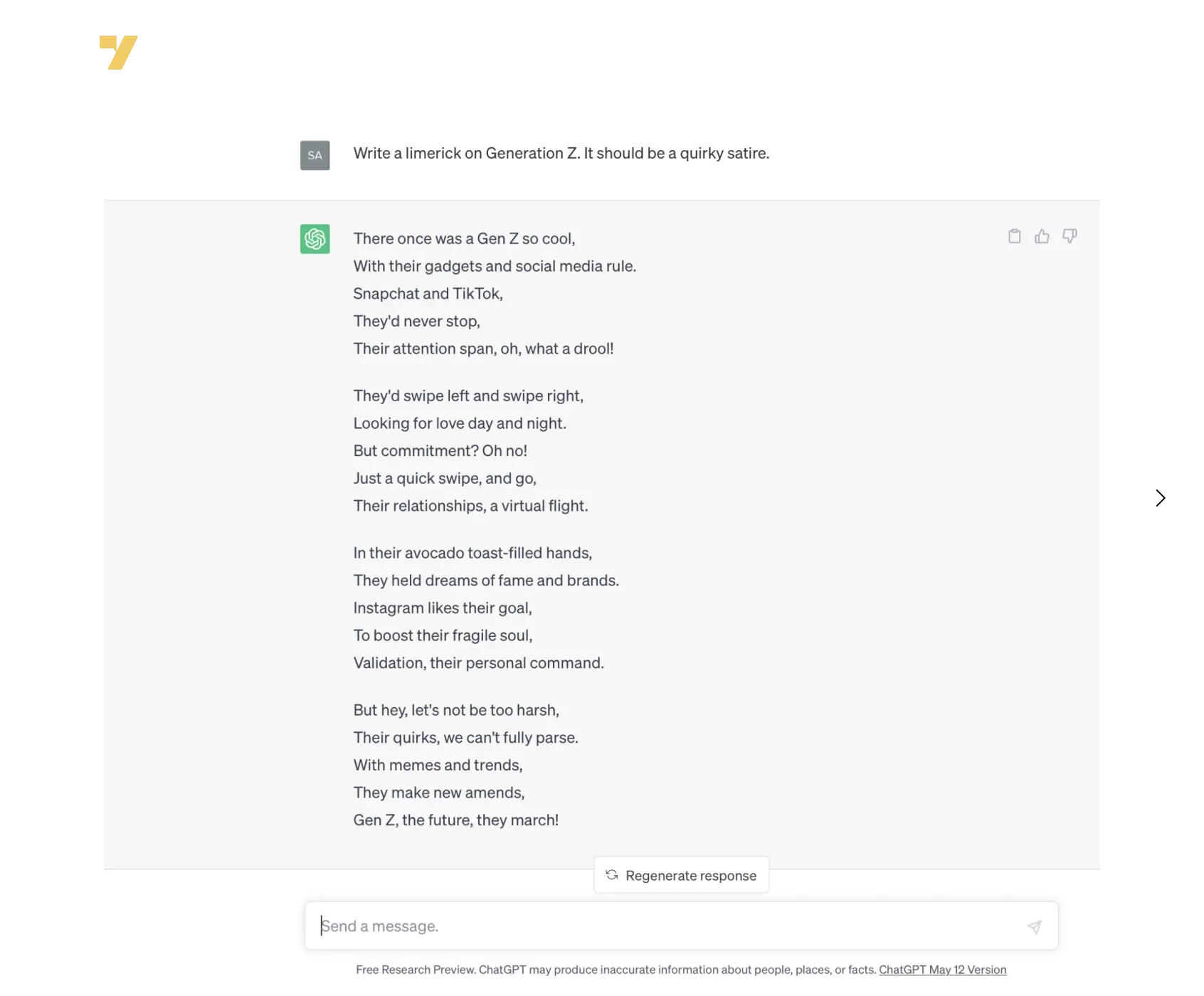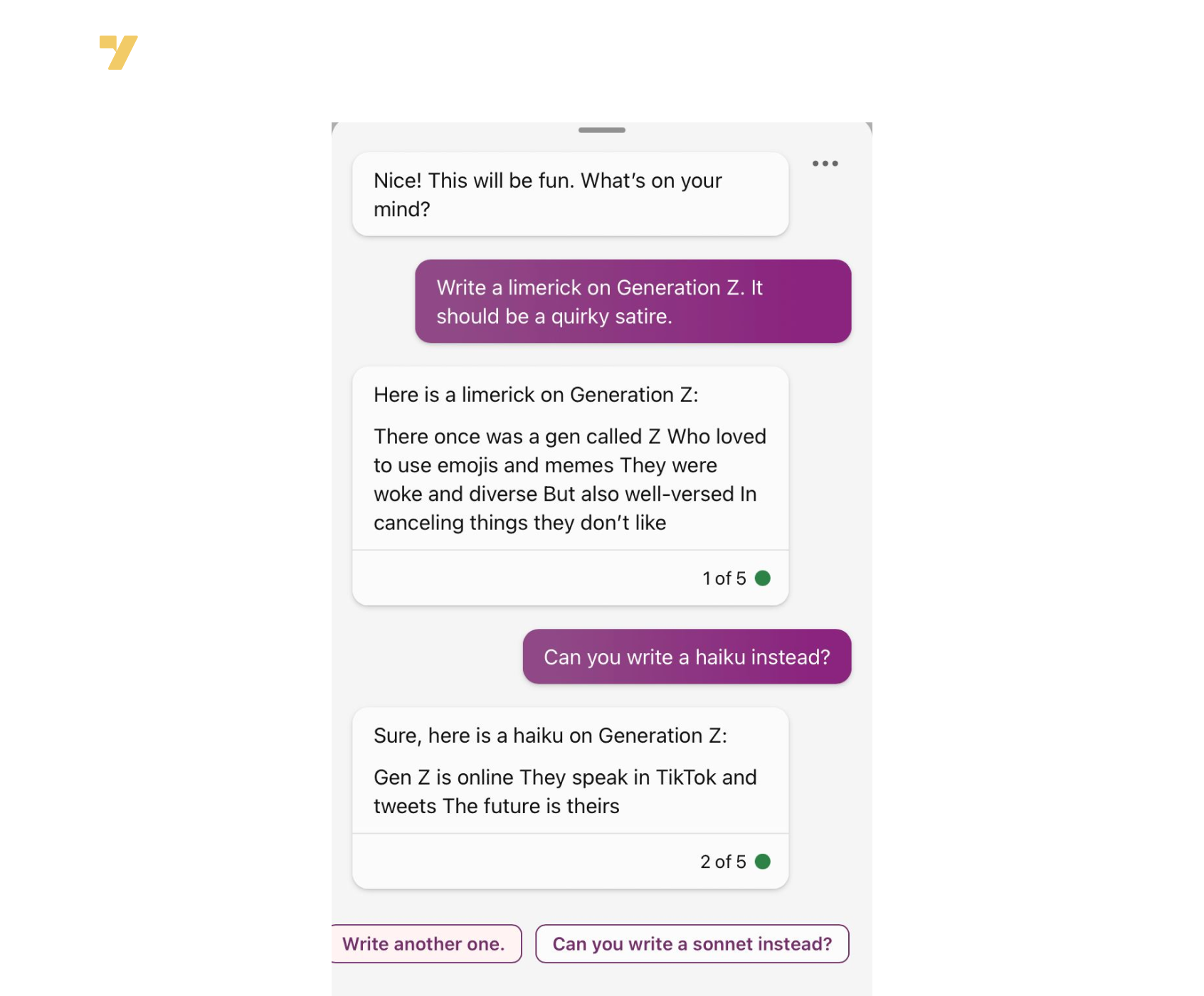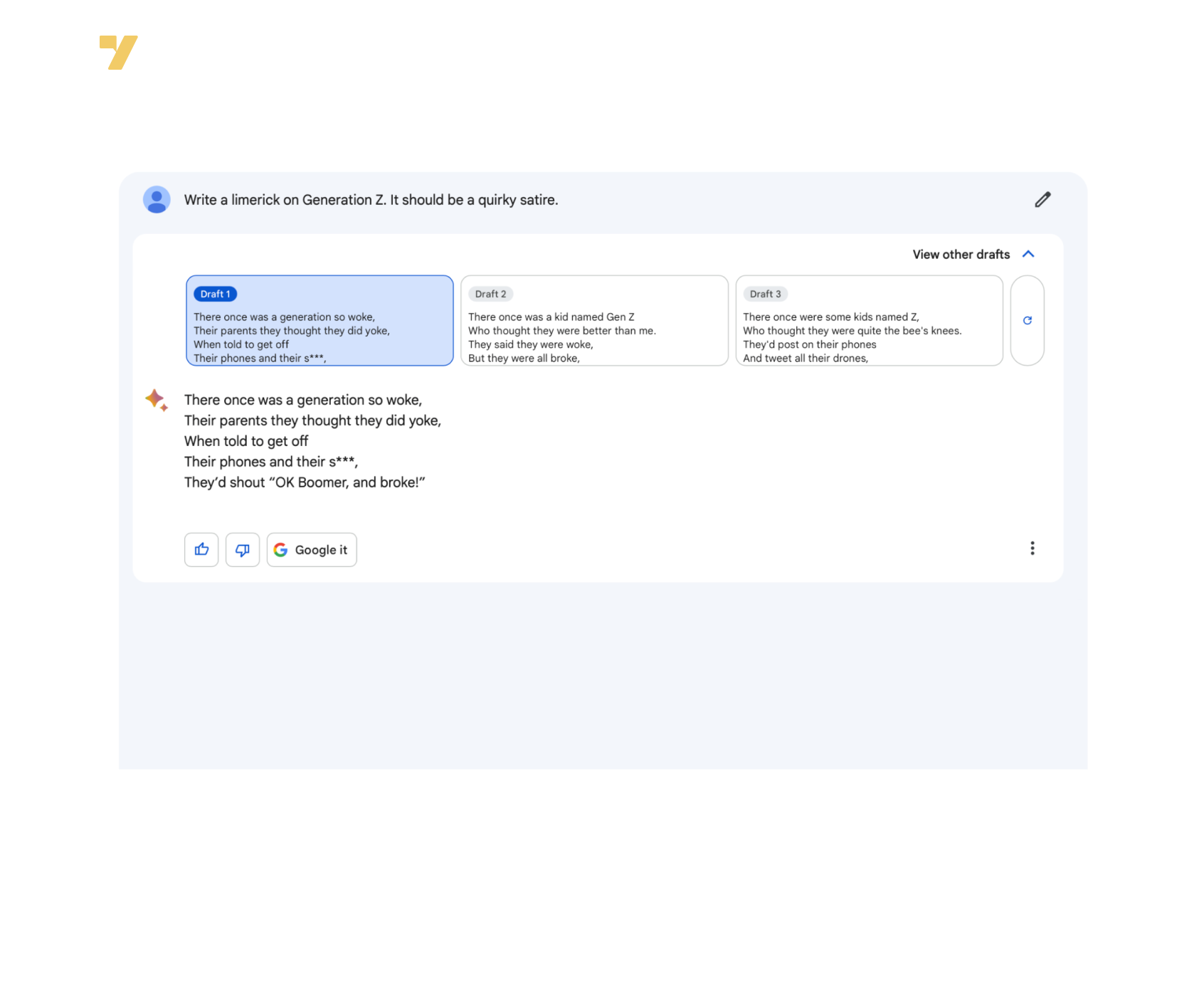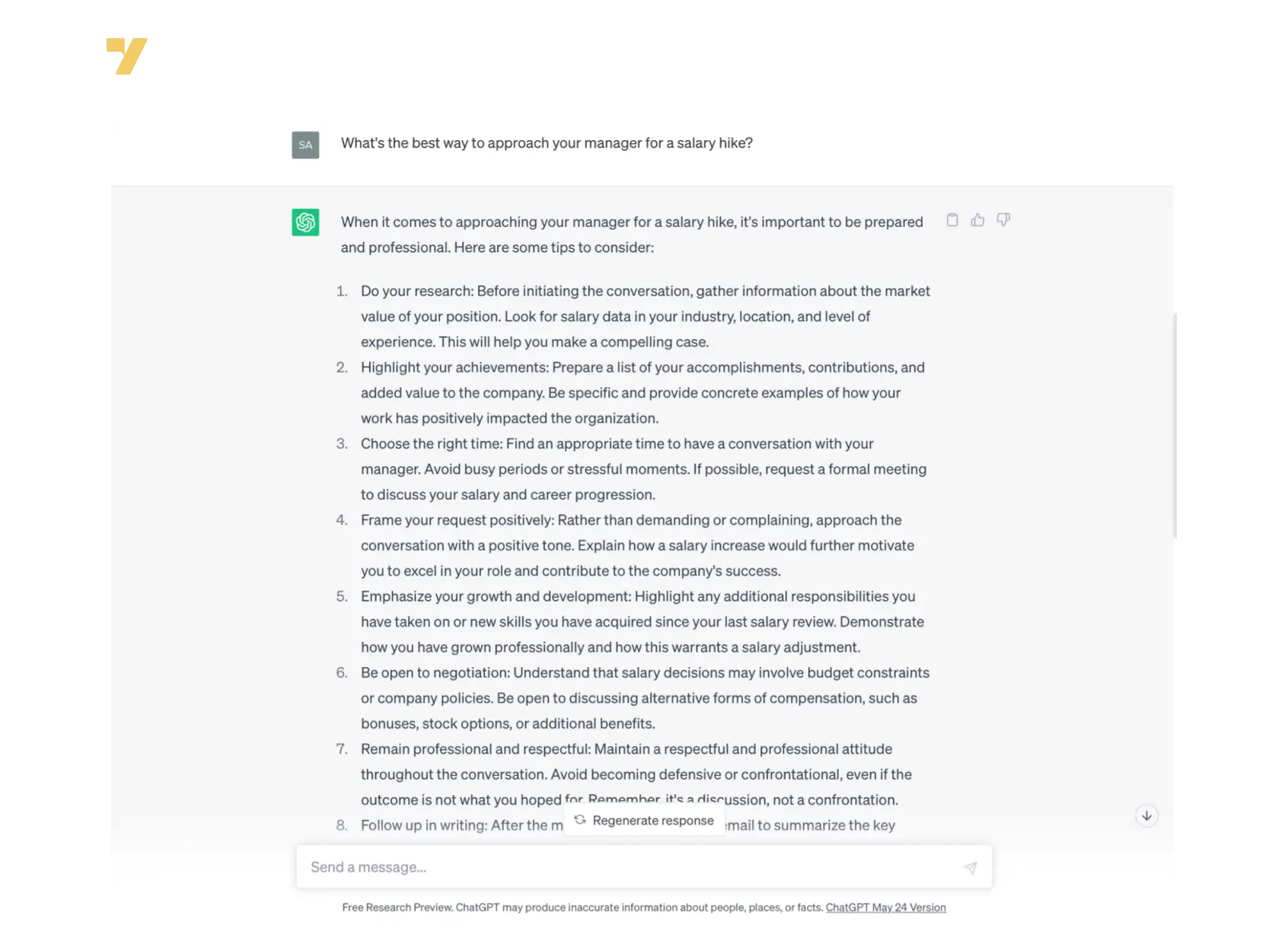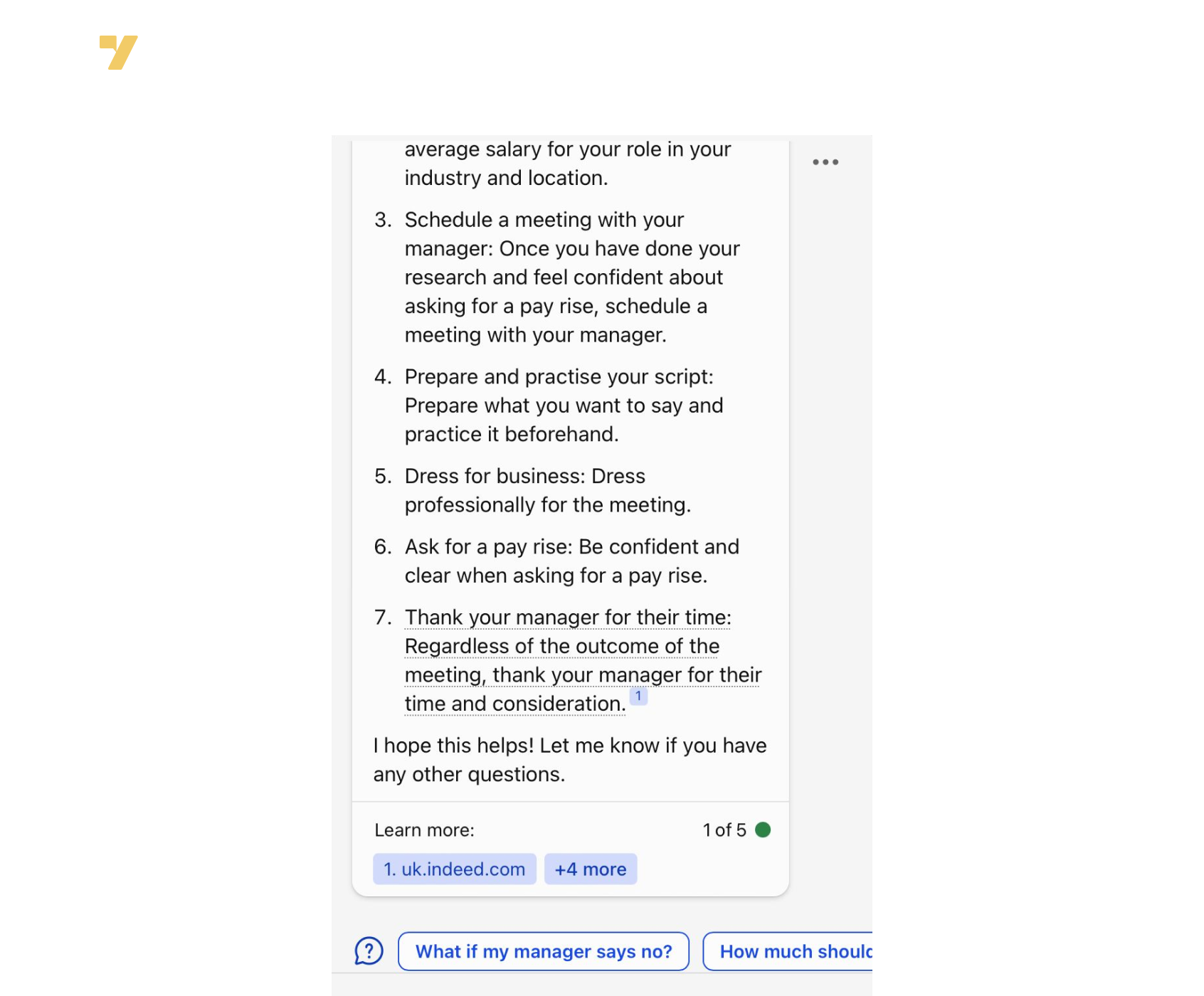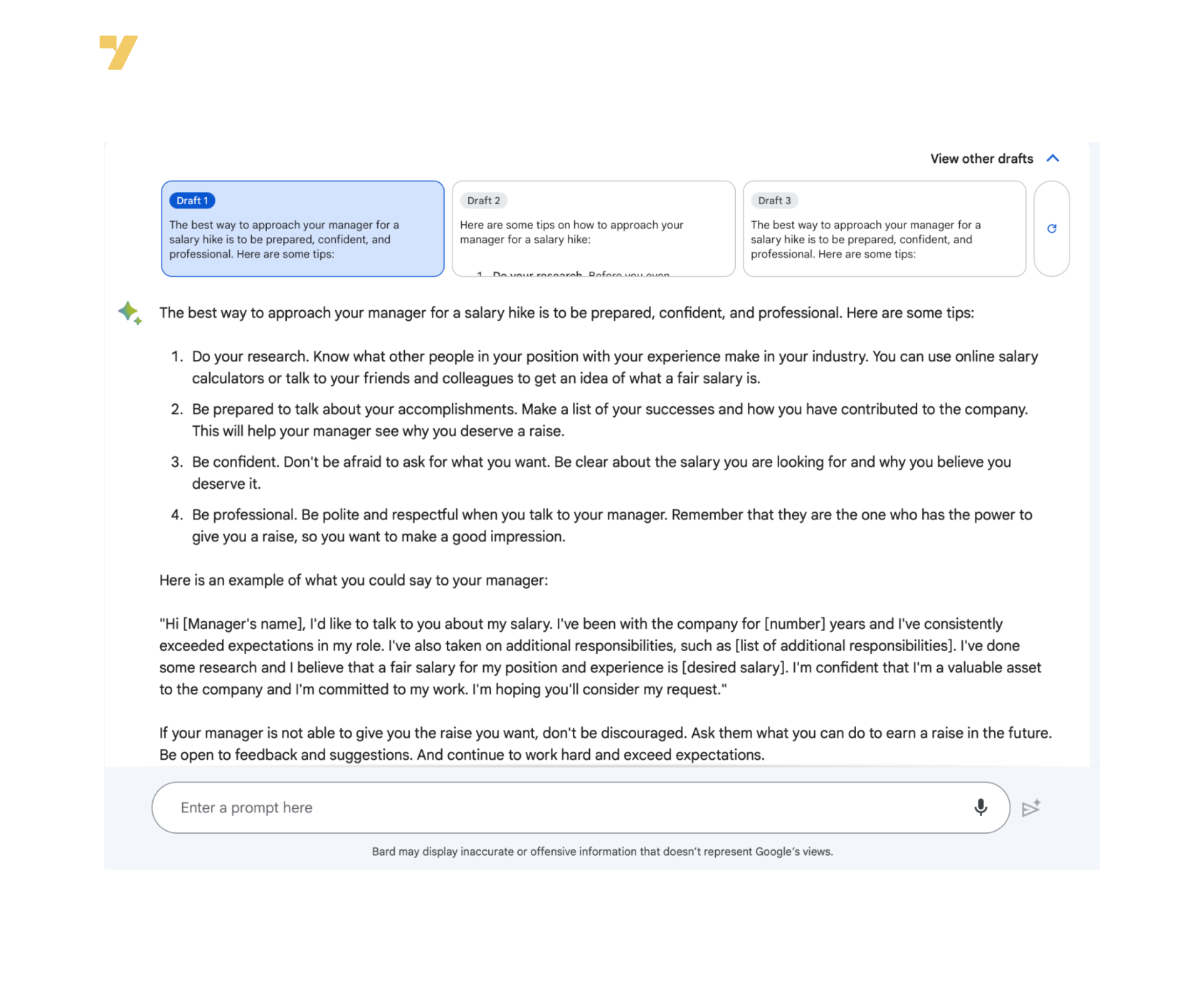In the realm of artificial intelligence (AI), the advancements in generative models have opened up remarkable possibilities for human-like text generation and interactive conversations. Language models, specifically Large Language Models (LLMs), have emerged as powerful tools in this domain, revolutionizing the way we interact with AI systems.
In this article, we delve into the intriguing world of ChatGPT, Bard, and Bing Chat, three notable chatbots that have captured widespread attention.
We explore their unique features, compare their capabilities, and discuss the ongoing competition to create the most helpful and engaging AI companion. Let’s dive in!
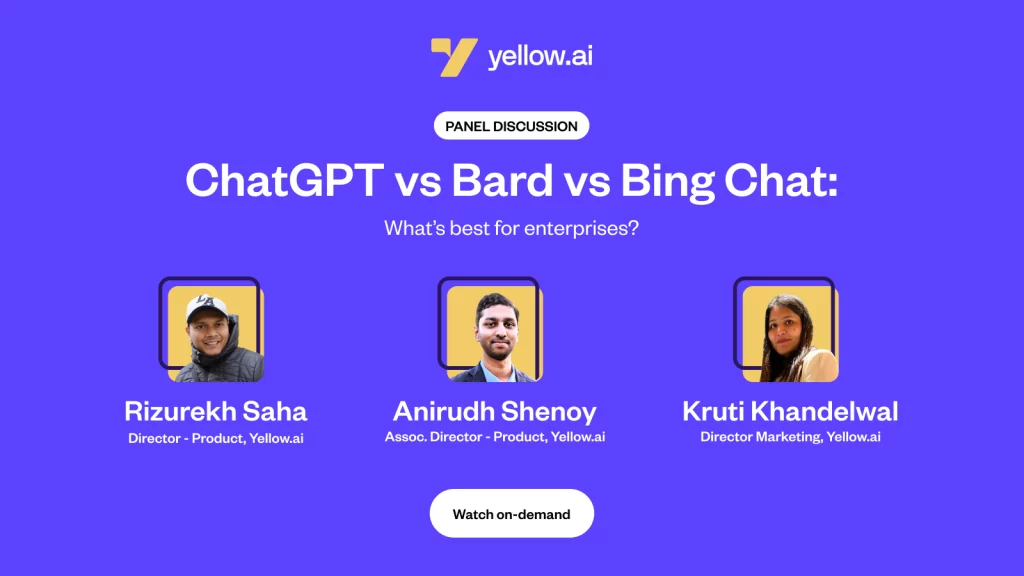
ChatGPT: Key Details
ChatGPT, developed by OpenAI, has become a hot topic of conversation in various settings, from boardrooms to social media and dinner table discussions.It is based on the GPT-3.5 architecture, which enables it to understand and generate contextually relevant responses across a wide range of topics. ChatGPT has been trained on a vast corpus of text data and can engage in conversations, provide information, and assist users in various tasks. Its ability to mimic human-like conversations has made it popular for tasks such as content generation.
Bard: Key Details
Bard, another cutting-edge AI model, has been developed by Google. During the Google I/O 2023 conference, Google announced several exciting features for Bard. The company highlighted improvements in language understanding, contextual awareness, and more dynamic conversational capabilities. Bard aims to provide users with a more engaging and human-like conversational experience, enabling smoother interactions and better assistance across a wide range of domains. The latest iteration of Bard is powered by Google’s PaLM2 (Pathway Language Model), their most advanced language model. The switch to PaLM2 has brought about various improvements in Bard, including enhanced coding capabilities, advanced math and reasoning skills, and more.
Bing Chat: Key Details
Bing Chat, developed by Microsoft, is an AI-powered chatbot experience that leverages the capabilities of OpenAI’s GPT-4 language learning model. Bing Chat utilizes a combination of machine learning, deep neural networks, and natural language processing techniques to deliver personalized search results, assist with tasks, and provide recommendations. It is designed to understand user intent, interpret queries, and generate relevant responses in a conversational manner.
ChatGPT vs. Google Bard vs. Bing Chat: Key differences
Determining the most helpful AI among ChatGPT, Bing Chat, and Google Bard depends on specific requirements and use cases. Each AI system has its strengths and areas of expertise. ChatGPT excels at generating contextually relevant responses and engaging in conversation-like interactions, making it suitable for content generation tasks. Bing Chat, on the other hand, specializes in delivering personalized assistance in a wide range of areas, including sharing comprehensive, lifelike responses.
These responses include footnotes that provide links to the original sources, ensuring that the information is accurate and current. Furthermore, it can assist with creative tasks, such as crafting poems, stories, songs, and even generating images based on text.
Bard’s enhanced contextual awareness and more dynamic conversational capabilities might make it a formidable competitor to ChatGPT and Bing Chat. Let us decipher the comparison between the three different basis parameters:
| Parameters | OpenAI ChatGPT | Google Bard | Bing Chat |
| Model | Based on GPT (Generative Pre-Trained Transformer) | PaLM2 (Pathway Language Model) | GPT-4 |
| Availability | Accessible worldwide through the OpenAI site for everyone. | Accessible in over 180 countries through the Google Bard site for Google accounts only. | Accessible worldwide by signing in with Microsoft accounts. Also, accessible through unauthenticated chat access without Microsoft accounts. |
| Subscription | Available for free. A paid version, ChatGPT Plus that runs on GPT-4 is also available for $20/month. | Available for free. | Available for free. It is worthy to note that Bing Chat allows free access to using GPT-4. |
| Languages | Available in over 50 languages, including English, Spanish, French, German, Chinese, and Japanese etc. | Available in US English, Japanese, and Korean. | Available in over 100 languages including English, French, German, Spanish, and Portuguese, etc. |
| Plug Ins & integrations | ChatGPT Plus supports 70+ third-party plugins. Users can install multiple plugins but can use only three at a time. | Supports plugins for Google and Search Engines. Google plans to add more plugins in the future. | Supports third-party plugins. |
| Multimodality | Does not support image and voice prompts. Generates only text responses. | Supports image and voice prompts. Generates responses across text and images. | Supports voice prompts. Generates responses across text and images including charts, graphs, and knowledge graphs. |
| Modes | No mode options available, however, it can tailor fit the response according to the user’s prompt. | No mode options available, however, it can tailor fit the response according to the user’s prompt. | Offers three chat modes, namely Creative, Balanced, and Precise. |
| Chat/Words/Characters limit | While there seems to be an hourly limit for queries, the limit is not shared publicly by OpenAI. There also seems to be a characters/words limit between the input and output, however, there is no official confirmation. | No character/words/chat limits. It can generate text of any length, up to the point where it becomes too computationally expensive for it to generate. | Limit is 20 turns per conversation and 200 chats per day. For unauthenticated chat access, the limit is 5 chat turns per session. |
| Mobile application availability | Is available via a free iOS app. The Android app is expected to launch soon. | Not available via a mobile application, only through a web browser. | Available on iOS and Android via a free app. Users can also add the Bing Chat widget on their smartphone’s home screen. |
| Response Cut-off | Responses are primarily based on data till 2021. Limited knowledge of events post 2021. | Responses are based on real-time information. | Responses are based on real-time information. |
| Export/ Share Resources | Content generated needs to be copy- pasted to other platforms. | Content generated can be exported to Gmail and Google Docs. | Content generated can be exported in PDF or Word documents or text files. |
| Chat history | Allows users to access their chat history and resume conversations from where they left off. | Allows users to access prompt history but users cannot resume conversations yet. | Allows users to access their chat history and resume conversations from where they left off. |
| Disclosing Sources | Does not disclose sources of generated content. | Can disclose sources of generated content in certain cases. | Can disclose sources of generated content. |
ChatGPT Vs. Bard Vs. Bing Chat: Which is better?
Determining which AI is the most helpful ultimately depends on the specific needs and use cases. For instance, if you require support for content generation, creative writing or inductive reasoning, ChatGPT’s ability to generate human-like responses and engage in conversations might be the most suitable choice. On the other hand, if you require a chatbot for web interaction, sourcing information, and addressing inquiries typically addressed through Google, Bing and Bard could be the preferable choice.
To compare these three chatbots, we asked them the same questions to test their responses. Let’s weigh in their responses:
Question 1. Write a limerick on Generation Z. It should be a quirky satire.
As observed, the response provided by ChatGPT surpasses the others in terms of its detailed and imaginative nature. It employs eloquent language to enhance creativity, incorporates nuanced aspects of the topic, makes contemporary references, and covers a wide spectrum of ideas. On the other hand, Bard’s limerick lacked the same level of creativity and eloquence, displaying traces of repetition despite presenting three different versions. Similarly, Bing’s response fell short in terms of creativity and thought process, despite including contemporary references. However, a notable feature in Bing Chat was the follow-up prompts it provided, and we even requested it to write a haiku. It is worth mentioning that we utilized the creative mode offered by Bing Chat, but it could have done much better in its response.
Regarding response speed, ChatGPT proved to be the fastest, generating its replies in a prompt manner. In contrast, both Bard and Bing Chat took approximately 8 seconds to generate their responses.
Question 2. What’s the best way to approach your manager for a salary hike?
The responses from all three chatbots were quite similar, but there were notable differences. ChatGPT provided a detailed and lengthy response, adopting a conversational tone. However, it did not mention the source of the information. When asked, ChatGPT clarified that it doesn’t have direct access to external sources and relies on general knowledge and best practices. It recommended consulting additional sources or professionals for specific guidance.
On the other hand, Bard kept its response concise and straightforward. We appreciated how Bard presented a basic structure with suggestions and placeholders to initiate the conversation. Similar to ChatGPT, Bard couldn’t provide a source citation due to its limitations as a language model. However, there were instances when Bard did provide sources and offered the option to ‘search related topics’ when we asked a few different questions.
Moving on to Bing, its chatbot provided a succinct response akin to Bard. What stood out was that Bing’s chatbot cited the source of the information and even shared additional articles for reference. It’s important to note that we utilized Bing Chat’s balance mode for this particular question.
In terms of response speed, ChatGPT once again proved to be the fastest among the three chatbots.
It’s important to note that the usefulness and effectiveness of these AI systems are continually evolving. As research and development in the field of AI progresses, we can expect further advancements and improvements in natural language understanding, context awareness, and conversational capabilities. In conclusion, the differences among ChatGPT, Bard, and Bing AI lie in their underlying architectures, features, and areas of expertise.
As AI technology continues to evolve rapidly, these systems represent significant milestones in the field of natural language processing. While ChatGPT and Bing Chat have established themselves as powerful AI models, Bard’s introduction at Google I/O 2023 suggests that it could potentially offer groundbreaking advancements in conversational AI.
FAQs:
What is the difference between Google Bard and ChatGPT?
ChatGPT’s main limitation is its training data, which only goes up until September 2021.It stands out in its ability to generate and summarize text while effectively tailoring it to the given prompts. Additionally, it provides recommendations with great proficiency.
In contrast, Bard is better at providing real-time information on current events, supports voice prompts, and can even generate images in response. To facilitate seamless information exploration, a “Google It” button has been incorporated into Bard, enabling users to effortlessly transition from the chatbot to accessing information from various online sources. However, ChatGPT outperforms Bard in terms of response time.
Which is better: ChatGPT or Bing Chat?
For free access to OpenAI’s advanced and powerful language model, GPT-4, Bing Chat is currently the recommended option. While ChatGPT Plus offers access to GPT-4 through a paid subscription, Bing Chat provides free access via Microsoft Edge. Bing Chat, integrated into a web browser, offers tailored outputs and image generation, while ChatGPT excels in producing long-form content.
Unlike ChatGPT, Bing demonstrates reliability with citations and provides recommendations for further searches. In summary, ChatGPT is ideal as a personal assistant, while Bing Chat serves as an excellent research assistant.
What is the future scope of ChatGPT?
ChatGPT is expected to further enhance its ability to understand and respond to complex queries, improving its conversational capabilities. OpenAI aims to refine ChatGPT by incorporating feedback and expanding its training data to cover more recent information. Additionally, advancements in multimodal capabilities, combining text with images and other media, are anticipated. Ultimately, ChatGPT’s future lies in becoming a more versatile and comprehensive conversational AI tool.
Is ChatGPT replacing Google?
ChatGPT is not intended to replace Google as a search engine or a general-purpose information retrieval system. While ChatGPT offers conversational capabilities and can provide answers and recommendations, Google’s core functionality and vast index of web content are unmatched. ChatGPT and Google serve different purposes, with ChatGPT focusing on generating human-like responses and engaging in interactive conversations, while Google specializes in retrieving and organizing information from the web at scale. Additionally, ChatGPT’s training data is restricted to information available up until September 2021.Therefore, they can be seen as complementary tools rather than direct replacements for each other.
Is Bing Chat the same as ChatGPT?
No, Bing Chat is not the same as ChatGPT. Bing Chat is a chatbot powered by Microsoft’s Bing search engine, offering conversational interactions and search-related functionalities. ChatGPT, on the other hand, is an AI language model developed by OpenAI, designed to generate human-like text responses and engage in interactive conversations. However, Bing Chat and ChatGPT Plus, the paid version of ChatGPT, are based on GPT-4.
Can Bing beat Google?
Bing’s integration of GPT-4 poses a challenge to the web search market, gaining market share and offering users enhanced benefits and a fresh user experience. However, Google continues to assert its long-standing expertise in AI through AI-powered features and the introduction of Bard. While Microsoft has the potential to gradually diminish Google’s dominance, the ultimate winner in the search competition is the advancement of AI technology.
Is Google AI more powerful than ChatGPT?
Both ChatGPT and Google AI possess distinct strengths and weaknesses, making it challenging to declare one as definitively superior without considering the specific task or application involved. The selection between ChatGPT and Google AI depends on the specific requirements of the task or application in question. ChatGPT excels in language-related tasks, while Google AI is more likely to be the preferred option for image and speech recognition tasks.
What is Google Bard good at?
Google Bard is designed to excel in answering questions by providing more relevant and informative responses. It is particularly adept at offering real-time information on current events. Google Bard also accepts voice prompts, enabling conversational interactions, and generates images to enhance the visual experience and provide comprehensive answers.
Will ChatGPT replace SEO?
No, ChatGPT is not expected to replace SEO. SEO focuses on optimizing websites and content to improve their visibility and ranking in search engine results, while ChatGPT serves as a conversational AI tool that can provide assistance and generate text-based responses.
Will ChatGPT replace blogging?
No, ChatGPT is not intended to replace blogging. Blogging involves creating and publishing content in a structured format, while ChatGPT is an AI tool that can generate text-based responses. They serve different purposes and can coexist, with blogging offering a platform for in-depth content creation and ChatGPT providing conversational interaction and assistance.
What is the Google alternative to Binge AI?
Google’s alternative to Binge AI is Google Bard. Bard is an experimental conversational AI service powered by Google’s PaLM2 (Path-Aware Language Model), their most advanced language model. Google Bard is still in its early stages, but it has the potential to be a powerful tool for communication and creativity.
References:
- https://zapier.com/blog/chatgpt-vs-bing-chat/#
- https://www.cnet.com/tech/services-and-software/chatgpt-vs-bing-vs-google-bard-which-ai-is-the-most-helpful/
- https://www.makeuseof.com/chatgpt-vs-bing-ai-vs-google-bard/
- https://bard.google.com/faq
- https://www.theverge.com/2023/3/24/23653377/ai-chatbots-comparison-bard-bing-chatgpt-gpt-4
- https://support.google.com/bard/answer/13575153?hl=en
- https://www.zdnet.com/article/now-you-can-access-bing-chat-without-a-microsoft-account/
- https://www.theverge.com/2023/5/4/23710071/microsoft-bing-chat-ai-public-preview-plug-in-support
- https://www.androidauthority.com/chatgpt-vs-bing-chat-3292126/
- https://botpress.com/blog/list-of-languages-supported-by-chatgpt#:~:text=How%20Many%20Languages%20Does%20ChatGPT,%2C%20Arabic%2C%20and%20many%20more.
- https://openai.com/blog/introducing-the-chatgpt-app-for-ios
- https://www.cnet.com/tech/services-and-software/microsoft-bing-ai-chat-widgets-how-to-get-them-on-ios-and-android/
Disclaimer:
The information contained herein is for general information purposes only. You should not rely upon the material or information on the website as a basis for making any business, legal or any other decisions. All product and company names are trademarks or registered trademarks of their respective owners and use of them does not imply any affiliation with or endorsement by them.










